- Home
- Conn Iggulden
The Dangerous Book of Heroes Page 7
The Dangerous Book of Heroes Read online
Page 7
From Norway to the Pyrenees, all of western and central Europe was Nazi-controlled, with enemy radio interception and spy networks operating in neutral Spain and Ireland. In the north, Sweden supplied the Nazis with steel and other metals. In the east, Russia, Hungary, Romania, and the Balkans supplied oil, coal, and food. In the south, Fascist Italy joined Germany and opened two more fronts against Britain in North and East Africa. At sea, German submarines and surface raiders attacked unprotected British convoys, the escorts having been withdrawn to defend Britain against invasion.
The German victory in Europe had been so fast that no plans had been prepared for an invasion of Britain. In July that was remedied with Hitler’s War Directive 16, which stated: “As England, in spite of her hopeless military situation, still shows no signs of willingness to come to terms, I have decided to prepare, and if necessary to carry out, a landing operation against her. The aim of this operation is to eliminate the English Motherland.”
For a German invasion to be possible, the Royal Navy had to be pushed out of the eastern English Channel, at least temporarily. To do that, Germany needed command of the air so that its formidable and experienced bomber and dive-bomber squadrons could knock out the navy. For command of the air, Royal Air Force Fighter Command first had to be destroyed.
To defeat Britain in 1940, German forces had only to take London, just fifty to sixty miles from the Kent and Sussex coasts. As with the Norman invasion of 1066, the remainder of the country could be overrun later. There would have been resistance, of course, far stiffer than they had encountered on the Continent, but an invasion was on. After all, the 1915 Gallipoli landings in the Mediterranean had been carried out successfully from ships’ boats in the face of machine guns, artillery fire, and barbed-wire defenses, and without tanks. The Gallipoli campaign failed only because it was fought on a narrow peninsula and uphill against cliffs. No such problems would confront German troops on the broad and level battlefront of southeast England.
With German control of the air, there would have been no insurmountable problems for an invasion fleet to cross the channel, supported by glider troops and parachutists. The Royal Navy stated that it could not prevent an invasion, because it wouldn’t know the landing ports and beaches, but it would be able to stop support and supplies by sea to that invasion—as long as the RAF maintained control of the air.
Copyright © 2009 by Graeme Neil Reid
The German Sixteenth and Ninth armies rehearsed for landings at ports and beaches between Folkestone and Brighton, while the Sixth Army practiced for landings between Weymouth and Lyme Regis. Panzer tanks were made watertight and fitted with snorkels, and rehearsed offloading some distance from a beach to proceed along the seabed and then ashore. The German navy scoured western Europe for suitable ships, barges, craft, and tugs—some 2,500—and moved them to the ports of Holland, Belgium, and France. Meanwhile, under Reichsmarschall Hermann Göring, the Luftwaffe prepared for “Eagle Attack.”
The amphibious invasion, known as Operation Sea Lion, was scheduled for the week of September 19–26, 1940, the date by which an invasion fleet could be assembled and when the tides were favorable for a dawn landing on the Kent and Sussex beaches. Göring promised Hitler that by then Germany would command the air over the channel and southeast England. On August 1, Hitler signed War Directive 17 for the destruction of RAF Fighter Command, and so began the battle of Britain. It was to be a busy three months.
RAF Fighter Command was then led by air chief marshal Sir Hugh Dowding, a brilliant, determined, but reserved man who knew more about aerial warfare than anyone else in Britain. It was Dowding who had changed the peacetime RAF from wooden biplanes to metal monoplanes. As a result, the first Hawker Hurricane flew in 1935 and the first Vickers Supermarine Spitfire in 1936. It was Dowding who arranged the first demonstration of Watson-Watt’s new radar, who created the radar air-defense network, and who developed airborne radar for night fighters. In 1936 he was appointed commander-in-chief of the newly formed Fighter Command.
His senior officer was Air Commodore Keith Park, a New Zealand air ace who had twenty-four victories in World War I and who was the RAF’s fighter expert. Together, they reorganized Fighter Command and the fighter defenses of Britain for war. An Observer Corps was formed of volunteers who reported from the ground all aircraft movements over Britain. Operation rooms were created for all levels of command, from airfields like RAF Duxford to Group Operations Headquarters at RAF Uxbridge. The airfields were converted to all-weather facilities—with concrete runways as opposed to grass.
Dowding and Park also realized that, although the theorists correctly anticipated attack by large bomber squadrons, they were incorrect when they said there was no defense except attack by opposing bomber squadrons. There was a defense: fighter squadrons. Fortunately, they were supported in this belief by the new minister of defense, Sir Thomas Inskip. Dowding increased the number of fighter squadrons, airfields, and pilot-training units and created the vital centralized command linked to the new radar network. He pressed and argued for even more pilots and ever more aircraft, although one type, the Defiant, turned out to be a turkey.
However, Dowding was not popular in the Air Ministry. He was usually right and ruffled too many feathers. He was “retired” in 1938 but immediately reinstated, a sequence that would happen four times. He sent a requisition to the Air Ministry for bulletproof glass for Hurricane and Spitfire cockpits; the politicians laughed at him. He told them: “If Chicago gangsters can have bulletproof glass in their cars, I can’t see any reason why my pilots cannot have the same.” He got the glass. How out of touch many politicians were with the reality of modern warfare and the role of the RAF is difficult to appreciate many years later.
During the collapse of France, despite Dowding’s advice, squadron after squadron of Hurricane fighters was deployed to France and destroyed. However, Dowding refused to commit Spitfire squadrons and, eventually, any more squadrons at all. Of 261 Hurricanes sent to France only 66 returned, a destruction rate of 75 percent. As a result, Fighter Command was reduced to almost half its strength, the loss of experienced pilots more critical than the loss of airplanes. If more squadrons had been sent to France, the battle of Britain would have been lost and Britain invaded.
Behind the scenes, Prime Minister Churchill appointed Canadian Lord Beaverbrook as minister of Aircraft Production, an inspired choice. Beaverbrook bypassed the Air Ministry, took over factories, and stopped production of bombers to increase production of Spitfire and Hurricane fighters. He had them delivered directly from the factories to the squadrons, created a “while-you-wait” repair service to which pilots flew their damaged fighters, and arranged the ferrying of aircraft across the Atlantic from Canada, which the Air Ministry had said was impossible. When the pro-Nazi American Henry Ford refused to support Britain by building Rolls-Royce Merlin engines under license, Beaverbrook paid the rival Packard company to do so. Later in the war, this led to the building of the brilliant British-designed and -engined P-51 Mustang fighter for the U.S. Army Air Force.
Dowding said later: “The country owes as much to Beaverbrook for the Battle of Britain as it does to me. Without his drive behind me I could not have carried on during the Battle.”
In the spring of 1940, Dowding appointed Keith Park as commander of 11 Group, the squadrons defending the vital southeast of England. Trafford Leigh-Mallory already commanded 12 Group, defending central England and Wales. Richard Saul commanded 13 Group, defending Scotland and northern England, while Quintin Brand commanded 10 Group, defending the west and southwest England.
So Dowding and a depleted Fighter Command entered the battle of Britain, facing a Luftwaffe that had flown and fought successfully in Spain, Poland, and western Europe. Göring’s strategy was to bomb the fighter airfields out of action, destroy fighter aircraft on the ground by bombing and strafing, and destroy them in the air with his fighters. It was the same tactic used successfully against the Polish, Norwegian, Fr
ench, Dutch, and Belgian air forces.
For the attack on Britain, the Luftwaffe had operational along the channel coast 656 single-seat single-engine Messerschmitt 109 fighters, 168 two-seat two-engine Messerschmitt 110 fighters, 248 two-seat single-engine Junkers Stuka dive-bombers, and 769 twin-engine bombers. Also on squadron strength but not operational were 153 Messerschmitt 109 fighters, 78 Messerschmitt 110 fighters, 68 dive-bombers, and 362 bombers.
In Denmark and Norway they had a further 34 Messerschmitt 110 fighters, 129 bombers to attack northern Britain, and 84 Messerschmitt 109 fighters (out of range of England but which could be brought south within range). In all, there were 2,749 aircraft. Additionally there were 244 reconnaissance and coastal aircraft for mine laying and pilot recovery.
On July 20, Fighter Command had operational 504 single-seat single-engine fighters, Hurricanes and Spitfires in a ratio of approximately four to one. Also on squadron strength but not operational were 78 Hurricanes or Spitfires for a total of 582 aircraft.
There were also 27 Boulton Paul two-seat single-engine Defiant fighters. The only time these were sent into action, July 19, they lost two-thirds of their number without a single loss to the enemy. They were not used again. The RAF also had Bomber Command and Coastal Command, but those aircraft could not be involved in the battle of Britain; they were not suitable.
In all aircraft, Fighter Command was outnumbered by four to one. In fighters, it was outnumbered by two to one.
Radar detection gave Fighter Command the time to deploy its squadrons to the right place at close to the right time, but rarely to the right height. The Nazi fighters invariably had the great advantage of height. Radar was vital to the battle, giving Fighter Command’s fewer aircraft more time in the air, and to a certain extent redressing the imbalance of numbers, but this became a double-edged sword for the RAF pilots. It meant that they flew many more hours than the German pilots, an average of six sorties or more each day. In addition, Luftwaffe aircrew knew the time they were to fly every day, whereas RAF pilots were on standby to “scramble” from dawn to dusk (woken at about 3:30 A.M., stood down at about 8:30 P.M.). As a result, the British pilots eventually became exhausted, and exhausted pilots make fatal mistakes.
Fighter Command did have the advantage of fighting over home territory, so that most of the pilots who survived a destroyed aircraft were returned to their squadron, whereas most Luftwaffe pilots who survived became prisoners of war. However, in war-experienced pilots as well as reserve pilots, Fighter Command was vastly outnumbered by the Luftwaffe. It was this lack of pilots and experience that brought it closest to defeat.
In early July the Luftwaffe attacked shipping and convoys in the English Channel and North Sea, made fighter sweeps across Kent and Sussex, and probed and tempted Fighter Command in order to assess its response times and the standard of the opposition. Dowding was careful not to commit his men and airplanes at the beginning of the battle, so Park and Leigh-Mallory made only limited responses to the attacks on shipping. The fighter sweeps were ignored. Even so, air activity was increasing. As early as July 10, Fighter Command flew more than six hundred sorties.
By the seventeenth, there were daylight bombing raids on factories in England and Scotland and on southern coastal towns, ports, and radar stations, as well as night bomber training flights. On the twenty-fifth—a rare sunny day in an overcast and wet July—several engagements took place protecting a convoy in the Dover Strait. Fighter Command lost 7 fighters against 16 German aircraft shot down, the heaviest casualties to that point. It was during that month that Park developed the tactic of sending Hurricanes to attack enemy bombers while Spitfires attacked the protecting fighters above. By the end of the month, however, neither air force was clear about how much damage had been done to the other.
For the benefit of the German public and the occupied countries, Luftwaffe propaganda announced only half its losses and higher RAF losses than even its pilots claimed. Fighter Command on the other hand announced its true losses, which the Luftwaffe assumed were false figures like its own. This resulted in the Luftwaffe believing it was doing better than it was. For the British public, Fighter Command accepted its pilots’ high claims of enemy aircraft destroyed, claims that were naturally error-prone from emotion, from two or more pilots claiming the same aircraft, and from the fact that everything happened in three dimensions at 300 miles per hour.
Fighter Command lost 145 aircraft in July, the majority of which had been replaced by Beaverbrook’s supply chain, but it was the loss of pilots that was the major concern. Of all aircrew lost in July, eighty were experienced flight and squadron commanders of the Fighter Command, irreplaceable and vital men.
On August 8 another convoy battle took place in the channel, over which several hundred aircraft fought. The Germans had 31 aircraft destroyed for the loss of 19 British fighters.
Still Dowding held Fighter Command back, so that the intercepting fighters were heavily outnumbered by both German fighters and bombers. This caused some questioning, even by the pilots themselves. It must also have reduced the chances of destroying German aircraft and increased the chances of losing more British aircraft, but Dowding knew that the crisis was yet to come. It began on August 12, coincidentally the opening of the grouse-shooting season.
Radar stations along the southeast coast were bombed, Portsmouth was hit by 150 bombers, and airfields of 11 Group were bombed, while hundreds of Luftwaffe 109 and 110 fighters protected their bombers. RAF Biggin Hill in Kent was in the thick of it, and its close-of-day intelligence report was typical for 11 Group: “Operational sorties: 36. Enemy casualties: 5 confirmed, 16 unconfirmed, 4 probables and damaged. All pilots safe. 1 in hospital.” The average age of the fighter pilots at Biggin Hill was several months under twenty-one. A headline in the following day’s newspapers read: “The Battle of Britain Is On.”
August 13 was Göring’s “Eagle Attack” day. The Luftwaffe flew 1,485 sorties and night-bombed cities in all four countries of the kingdom, including two aircraft factories in Belfast and Birmingham. The RAF responded with 700 sorties, shooting down 46 enemy aircraft for the loss of 13 fighters but losing a further 47 assorted aircraft on the ground. Overall it was the Luftwaffe’s day. On the fourteenth more airfields, radar stations, and factories were bombed.
The fifteenth saw the largest attack of the battle, with more than 1,800 German aircraft launched in five massive assaults. It included all German aircraft stationed in Norway, Denmark, Holland, Belgium, and France in an all-out attempt to smash Fighter Command and bring the RAF to its knees. Hurricane and Spitfire pilots shot down 75 aircraft for the loss of 34 fighters shot down and 16 destroyed on the ground. That was the RAF’s day. The Luftwaffe called it “Black Thursday,” yet the following day it continued the onslaught, flying another 1,700 sorties against Britain.
By mid-August, the Luftwaffe had lost a total of 363 aircraft as well as most of their pilots and crews. The RAF had lost 181 fighters shot down and 30 destroyed on the ground, a total of 211, but Fighter Command also had lost 154 pilots, of which only 63 could be replaced. In addition, a further 80 percent of squadron commanders had been lost to death, injury, or exhaustion, so that by then, inexperienced commanders were leading inexperienced pilots into battle. Fighter Command was wavering.
The smiling young pilots in their white silk scarves, leather-and-sheepskin flying jackets, blue uniforms, and shaggy flying boots were becoming drawn and exhausted. During standby, they lounged in the mess or sprawled outside in deck chairs and on the grass, reading, smoking, chatting, drinking tea or coffee, waiting for the inevitable telephone call from Control to scramble once again. Some dozed under the wings of their airplanes; one squadron’s pilots remained in their cockpits. In the few hours off-duty, they slept, socialized at the local pub, scrawling their names on the ceilings and walls, went to the movies, fell in love, or made the occasional trip to London on a twenty-four-hour pass.
The ground crews, too, suffered heavy cas
ualties and were tired, working throughout the day and night repairing, servicing, re-arming, and refueling the planes, then repairing the airfields. The effectiveness of the Hurricanes and Spitfires depended as much on the ground crews as on the pilots. Dowding rotated his squadrons—pilots and ground crews—whenever possible; during the three months of the battle of Britain, six different squadrons flew from Biggin Hill.
Yet there were simply not enough replacement pilots, and at the end of each day even more were required. From the Fleet Air Arm, 58 pilots were transferred to Fighter Command, a few suitable bomber pilots were retrained as fighter pilots, and RAF technicians who at least knew about fighters were sent to flying school. On the other side of the channel, Göring was fuming at his Luftwaffe’s inability to destroy the RAF. His pilots, too, were frustrated. Every time they attacked, there were the Hurricanes and Spitfires, always waiting, no matter how many they shot down.
Copyright © 2009 by Graeme Neil Reid
At a meeting on August 19, Göring asked his two most experienced and successful fighter pilots what they required to defeat the RAF. Major Moëlders asked for a more powerful engine for the Messerschmitt 109 to counter the Rolls-Royce Merlins, while Major Galland famously asked for an “outfit of Spitfires for my Group.”
Göring changed tactics to twenty-four-hour attack. He relocated most of his fighters to airfields around Calais to provide even closer support for his bombers and concentrated the assault on fighter airfields. He was forced to withdraw the Stuka dive-bomber because of its high casualty rate. Dowding and Park countered by ordering their pilots to concentrate on the bombers, to leave the fighters alone whenever possible and not to pursue over the English Channel. The bombers were the priority. The battle of Britain now entered its critical period.

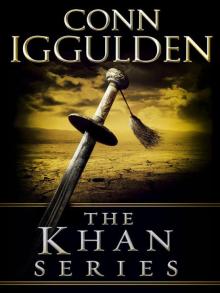 The Khan Series 5-Book Bundle
The Khan Series 5-Book Bundle Tollins 2: Dynamite Tales
Tollins 2: Dynamite Tales Tollins: Explosive Tales for Children
Tollins: Explosive Tales for Children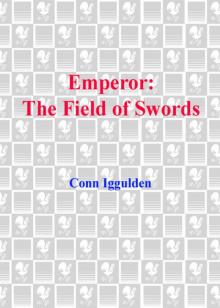 The Field of Swords
The Field of Swords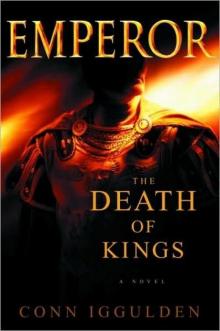 The Death of Kings
The Death of Kings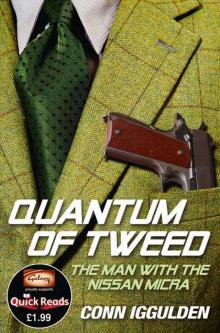 Quantum of Tweed: The Man With the Nissan Micra
Quantum of Tweed: The Man With the Nissan Micra Bones of the Hills
Bones of the Hills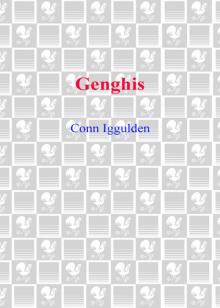 Genghis: Birth of an Empire
Genghis: Birth of an Empire The Gates of Rome
The Gates of Rome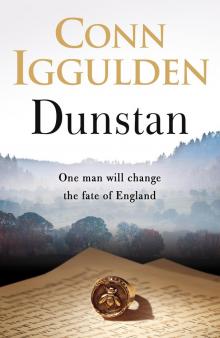 Dunstan
Dunstan Fig Tree
Fig Tree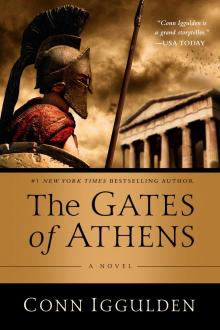 The Gates of Athens
The Gates of Athens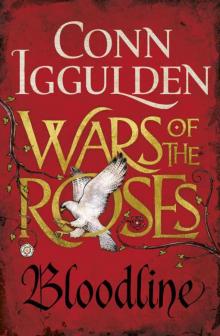 Stormbird
Stormbird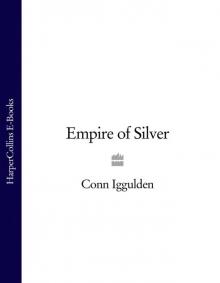 Khan: Empire of Silver
Khan: Empire of Silver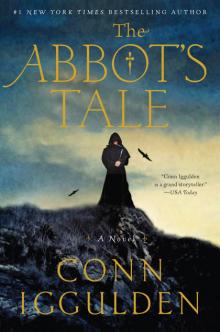 The Abbot's Tale
The Abbot's Tale Gengis: Lords of the Bow
Gengis: Lords of the Bow The Gods of War
The Gods of War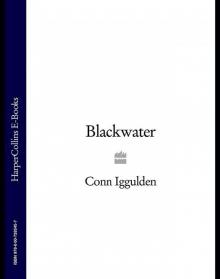 Blackwater
Blackwater Ravenspur: Rise of the Tudors
Ravenspur: Rise of the Tudors Wars of the Roses: Trinity (War of the Roses Book 2)
Wars of the Roses: Trinity (War of the Roses Book 2)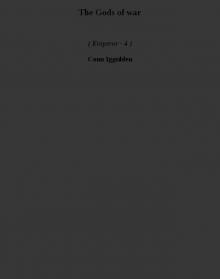 The Gods of war e-4
The Gods of war e-4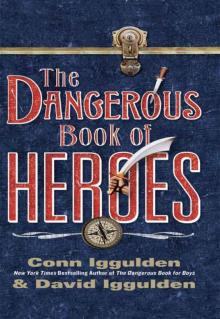 The Dangerous Book of Heroes
The Dangerous Book of Heroes Stormbird wotr-1
Stormbird wotr-1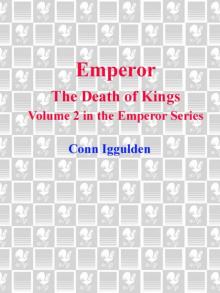 Emperor: The Death of Kings
Emperor: The Death of Kings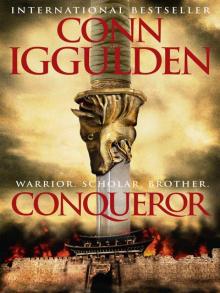 Conqueror (2011) c-5
Conqueror (2011) c-5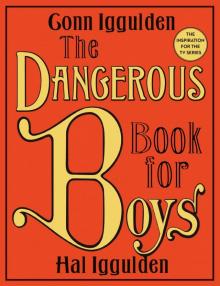 The Dangerous Book for Boys
The Dangerous Book for Boys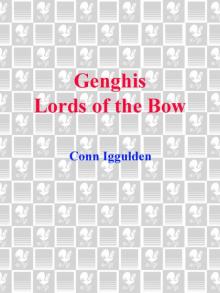 Genghis Lords of the Bow
Genghis Lords of the Bow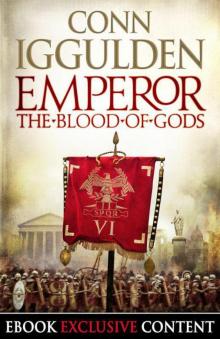 Emperor: The Blood of Gods (Special Edition) (Emperor Series, Book 5)
Emperor: The Blood of Gods (Special Edition) (Emperor Series, Book 5)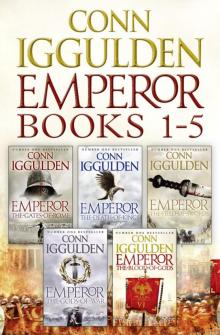 The Emperor Series: Books 1-5
The Emperor Series: Books 1-5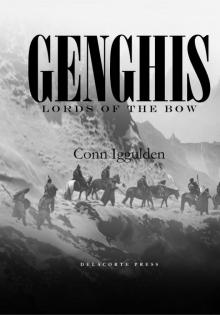 Lords of the Bow c-2
Lords of the Bow c-2 Lords of the Bow
Lords of the Bow Quantum of Tweed
Quantum of Tweed Wars of the Roses 01 - Stormbird
Wars of the Roses 01 - Stormbird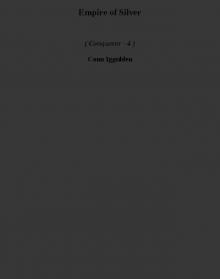 Empire of Silver c-4
Empire of Silver c-4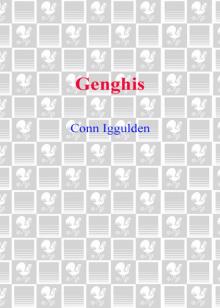 Birth of an Empire
Birth of an Empire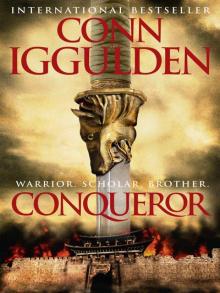 Conqueror (2011)
Conqueror (2011)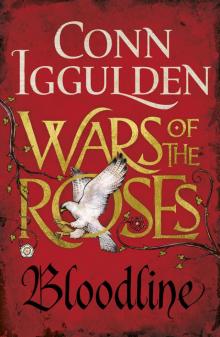 Wars of the Roses: Bloodline: Book 3 (The Wars of the Roses)
Wars of the Roses: Bloodline: Book 3 (The Wars of the Roses) Bones Of the Hills c-3
Bones Of the Hills c-3 Empire of Silver
Empire of Silver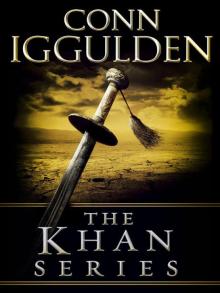 The Khan Series 5-Book Bundle: Genghis: Birth of an Empire, Genghis: Bones of the Hills, Genghis: Lords of the Bow, Khan: Empire of Silver, Conqueror
The Khan Series 5-Book Bundle: Genghis: Birth of an Empire, Genghis: Bones of the Hills, Genghis: Lords of the Bow, Khan: Empire of Silver, Conqueror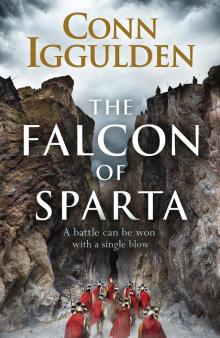 The Falcon of Sparta
The Falcon of Sparta Explosive Tales for Children
Explosive Tales for Children